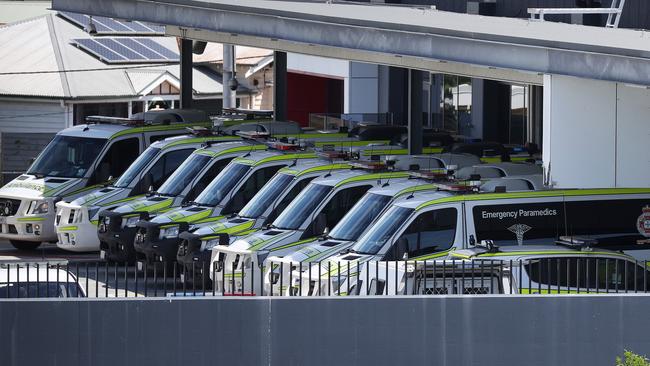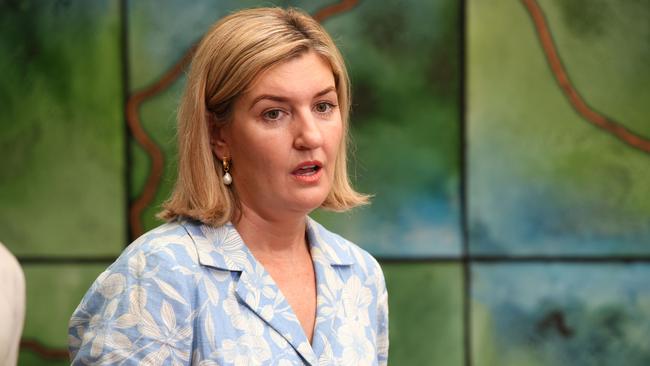Qld’s ambo shame: 25-plus min waits, longest in decade
Queenslanders are waiting longer for ambulances than at any other time in the past decade, with the state’s service under the highest demand in the country.
QLD Politics
Don't miss out on the headlines from QLD Politics. Followed categories will be added to My News.
Queenslanders are waiting longer for ambulances than at any other time in the past decade, with the state’s service under the highest demand in the country.
While more than 93 per cent of triple-zero calls were answered in less than 10 seconds, 90 per cent of ambulances arrived within 25.2 minutes – almost nine minutes, or 36 per cent, longer than in 2013/14 and seven minutes longer than pre-Covid.
It was also an increase on 24.9 minutes the previous year, while the Queensland Ambulance Services’ 50th percentile response rate also stretched from 12.5 minutes from 12.2 minutes – more than three minutes longer than three years ago.
More than 1.2m incidents were logged across the 2022-23 financial year according to the latest independent report on government services, including more than 530,000 Code 1 emergencies.
■ Listed: Qld Health’s history of failures and flops

But despite Queenslanders facing longer wait times for ambulances, the state’s response times remained on par – or better – when compared with the other major states.
Health Minister Shannon Fentiman said it was “no secret” demand for ambulance services had spiked across the country, and “Queensland is not immune”.
“Our hardworking paramedics dedicate their lives to helping their fellow Queenslanders in their time of need, and I want to take this opportunity to thank them for what they do,” she said.
“Of those incidents, 531,885 were Code 1 emergency incidents – more than any other state or territory – and an increase of over 25,000 incidents compared to the previous financial year.
“Despite this, Queenslanders can be confident that their ambulance will arrive at the same time, or even sooner, than it would in other states.”
But response times for Queensland’s most critical patients – classed as Code 1A calls – had improved, with the 50th percentile response time falling from 8.8 minutes in 21/22 to 8.6 minutes in 22/23 – and on track to improve again this financial year.
The Health Minister said this showed that the care of Queensland’s most critical patients “is being appropriately prioritised”.
“All of these improvements are despite a continued increase in demand for ambulance services,” Ms Fentiman said.

“Our ambulance service is leading the nation, and it is because of our incredible frontline
staff and the investment that our Government is making in them.
“We continue to be the only mainland state in the country that provides ambulance services for free, and this is something that will never change under a Labor Government.”
Pressures on the state’s health system and ambulance services have been in the spotlight with recent months, with two high-profile deaths late last year.
This included Brisbane mum Cath Groom, who was found dead in her bed by her son on November 18 after waiting more than one and a half hours for an ambulance.
Ms Groom’s sister Bec McQuilty said she was still waiting on answers after the death of her only sibling, while also taking on the role as mum for her nephew.
“I am now petrified every single day that if I need an ambulance for myself or my family I am not confident they will arrive in time or arrive at all,” Mrs McQuilty said.
She also said she would continue to seek answers surrounding the events which led to her sister’s death, but was also committed to advocating for improved ambulance waiting times.
“When I have the capability and I’m not in this stage of grief, I will be personally requesting information and following through,” she said.
Queensland man Wayne Irving died while ramped in an ambulance at Ipswich Hospital just a few days before Ms Groom’s death.


